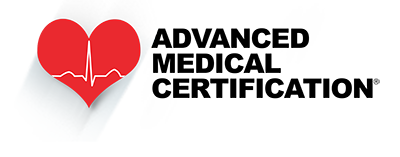| Adenosine |
- Narrow PSVT/SVT
- Wide QRS tachycardia, avoid adenosine in irregular wide QRS
|
- 6 mg IV bolus, may repeat with 12 mg in 1 to 2 min.
|
- Rapid IV push close to the hub, followed by a saline bolus
- Continuous cardiac monitoring during administration
- Causes flushing and chest heaviness
- Ideally, use a 3mL syringe, 3-way stopcock,
and a 10mL flush to administer the adenosine
efficiently
|
| Amiodarone |
- VF/pulseless VT
- VT with pulse
- Tachycardia, rate control
|
- Conscious VT/VF: 150mg over 10 minutes,
followed by a drip
- Unconscious VF/VT: 300mg, add 150 mg if not
effective
- Max dose: 450mg
|
- Anticipate hypotension, bradycardia, and gastrointestinal toxicity
- Continuous cardiac monitoring
- Very long half-life (up to 40 days)
- Do not use in 2nd or
3rd-degree heart block
- Do not administer via the ET tube route
|
| Atropine |
|
- 1 mg IV/IO
- Max Dose: 3 mg
|
- Cardiac and BP monitoring
- Do not use in glaucoma or tachyarrhythmias
- Minimum dose 0.5 mg
|
- Specific Toxins/overdose (e.g. organophosphates)
|
- 2 to 4 mg IV/IO may be needed
|
| Dopamine |
|
- 5 to 20 mcg/kg/min
- Titrate to desired blood pressure and/or
desired heart rate
- Max dose: 20mg
|
- Fluid resuscitation first
- Cardiac and BP monitoring
|
| Epinephrine |
|
- 1.0 mg (1:10,000) IV/IO or 1 ampule (1:1,000) in
10ml of normal saline
- Maintain: 0.1 to 0.5 mcg/kg/min Titrate to
desired blood pressure
|
- Continuous cardiac monitoring
- NOTE: Distinguish between 1:1,000 and 1:10,000 concentrations
- Give via central line when possible
|
|
|
- 0.3-0.5 mg IM
- Repeat every 5 mins as needed
|
- Symptomatic bradycardia/Shock
|
- 2 to 10 mcg/min infusion
- Titrate to response
|
Lidocaine
(Lidocaine is recommended when Amiodarone is not available) |
|
- Initial: 1 to 1.5 mg/kg IV loading
- Second: Half of first dose in 5 to 10 min
- Maintain: 1 to 4 mg/min
|
- Cardiac and BP monitoring
- Rapid bolus can cause hypotension
and bradycardia
- Use with caution in renal failure
|
- Wide Complex Tachycardia with Pulse
|
- Initial: 0.5 to 1.5 mg/kg IV
- Second: Half of first dose in 5 to 10 min
- Maintain: 1 to 4 mg/min
|
| Magnesium Sulfate |
- Cardiac Arrest/pulseless Torsades
|
- Cardiac Arrest: 1 to 2 gm diluted in 10 mL D5W IVP
|
- Cardiac and BP monitoring
- Rapid bolus can cause hypotension and bradycardia
- Use with caution in renal failure
- Calcium chloride can reverse
|
- Torsades de Pointes with pulse
|
- If not Cardiac Arrest: 1 to 2 gm IV over
5 to 60 min
- Maintain: 0.5 to 1 gm/hr IV
|
| Procainamide |
- Wide QRS Tachycardia
- Preferred for VT with pulse (stable)
|
- 20 to 50 mg/min IV until rhythm improves, hypotension occurs, QRS widens by 50%, or MAX dose is given
- MAX dose: 17 mg/kg
- Drip = 1 to 2 gm in 250 to 500 mL at 1 to 4 mg/min
|
- Cardiac and BP monitoring
- Caution with acute MI
- May reduce dose with renal failure
- Do not give with amiodarone
- Do not use in prolonged QT or CHF
|
| Sotalol |
- Tachyarrhythmia
- Monomorphic VT
- 3rd line anti-arrhythmic
|
- 100 mg (1.5 mg/kg) IV over 5 min
|
- Do not use in prolonged QT
|
